Former biology professor George Ledingham spent a lifetime collecting plant samples housed in the on-campus herbarium that now bears his name. The herbarium is getting a new lease of life thanks to a multi-disciplined effort that has rocketed the facility into the digital age.

The George F. Ledingham Herbarium and its collection of specimens—some 70,000 dried plants, flowers, mosses and lichen—has been a gem of the University’s biology department for decades, but regrettably it remains relatively unknown to the outside world. That is about to change.
Mel Hart, associate dean of Science: Student experience and engagement, is happy it won’t remain a secret for much longer. She is spearheading a project to digitize the entire collection over the next five to ten years, making the data from each specimen available on the Global Biodiversity Information Facility (GBIF), a free and open global online database.
“There's a lot of historical importance in here,” says Hart about the herbarium. “It's not just plants that have been pressed and dried. There’s just so much in the collection that connects to the Saskatchewan landscape.”
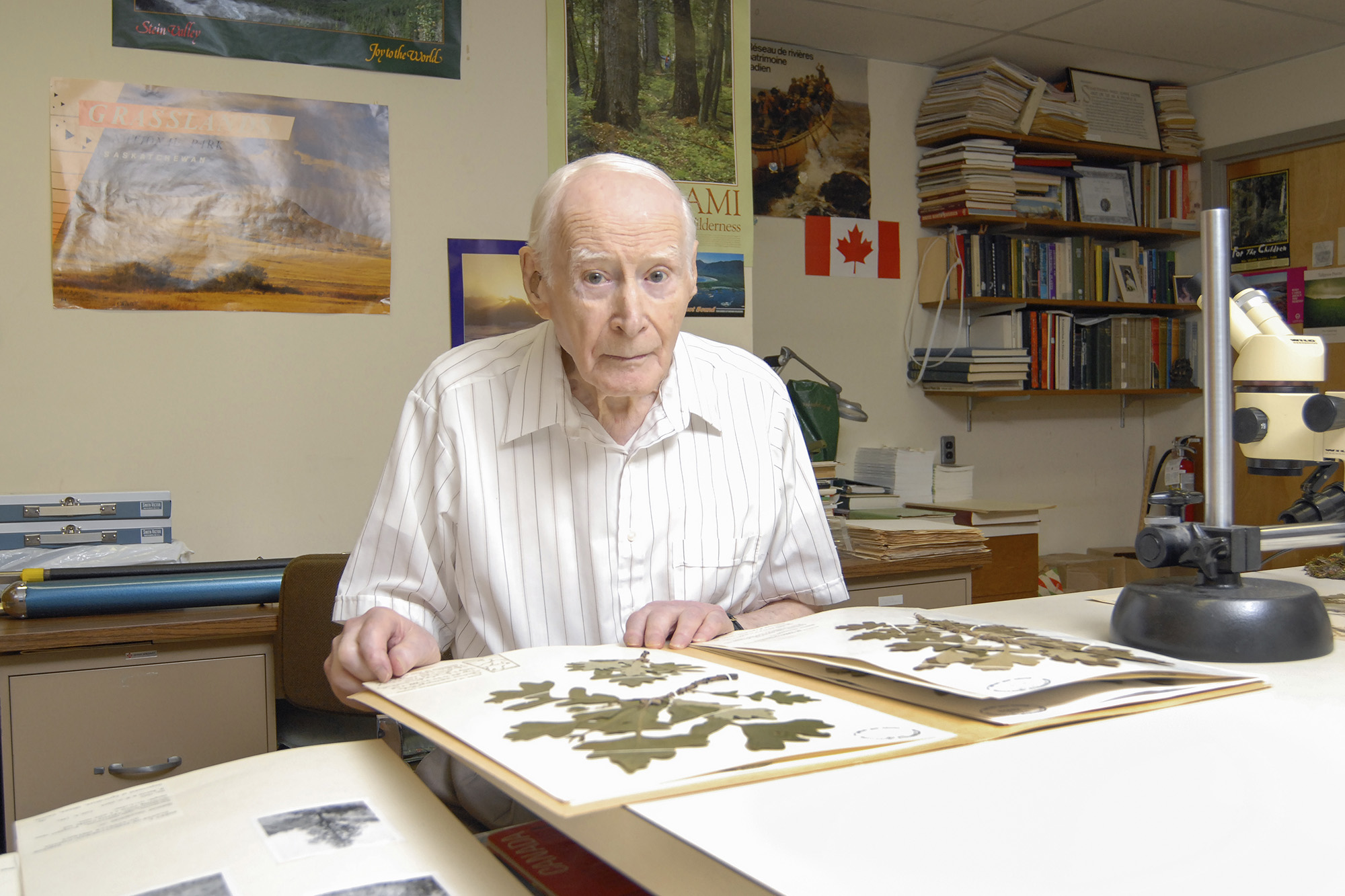
The Ledingham legacy
Behind that connection is one man, who dedicated his life to the collection and study of Saskatchewan’s plant life. George F. Ledingham, born on his family’s farm in 1911 near Boharm, Saskatchewan, attained his undergraduate, graduate, and doctorate degrees in science during the Great Depression in Saskatoon and Wisconsin. He worked his way up in the Biology department at Regina College from assistant professor in 1946 to chair of the department in 1969, when it was known as the Regina Campus of the University of Saskatchewan. Retiring in 1978, four years after the University became an independent degree-granting institution, Ledingham taught until 1983.
Throughout his career, this Indiana Jones of biology gathered specimens from all over Saskatchewan and around the world. In 1965, he discovered a new species in Iran which was subsequently named after him as Astragalus ledinghamii.
“Although he retired in 1978, George continued working in the herbarium, coming into the University several times a week right up until a few months before his death in 2006,” says Hart.
For a man who spent so much time in the herbarium, which was named after him in 1990, one needs to hunt for signs of Ledingham’s presence. But on one wall hang awards from Environment Canada and the Canadian Parks Service for great acts of service, next to the grey fedora he wore gathering specimens. Tucked into the frame of one certificate a photo shows George wearing the hat tromping through waist-high grass, a plant press hanging from a strap in his right hand.
“Although he retired in 1978, George continued working in the herbarium, coming into the University several times a week right up until a few months before his death in 2006,” says Hart. His dedication to the work he did is just one part of why the Ledingham Herbarium is such a special place.
While the plants are dried and laid out on acid-free paper, the moss and lichen collections are contained in small envelopes in cardboard boxes that once held Hush Puppies, Italian-made shoes, rice cakes, and biscuits. Pulling out the specimens and reading the immaculate cursive of the labels makes one feel they’ve gone back in time.
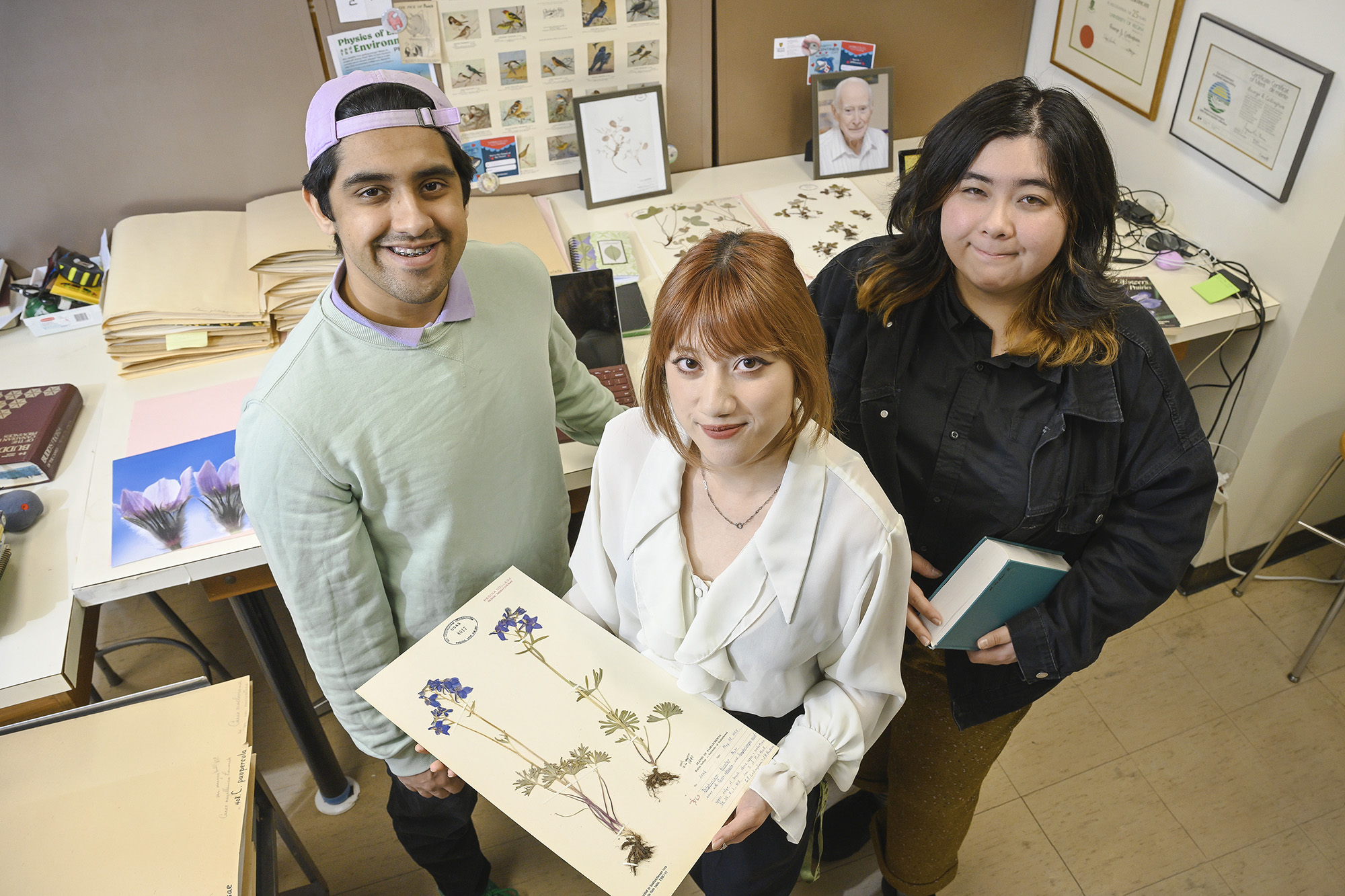
A new generation of botanists
At a table in the front of the herbarium sit biology students, Ellaissa Andrade BSc ‘22 and Bazil Rehman BSc ’23. Tasked with transcribing the written information found on each of these labels into digital files. They are also getting ready to create images of each specimen with a new high-resolution scanner the faculty received earlier this spring.
The legacy of Ledingham’s work isn’t lost on the two young scientists, who were born nearly 90 years after Ledingham, and 55 years after he created the herbarium in 1945.
“There's so much documentation that he has from over the course of his lifetime that really makes for a richer story,” she says.
“It’s interesting to see how he spent his life,” says Rehman. “He started this when he was really young, he was our age he was already collecting specimens. Then he kept doing this for another 70 years. It’s really impressive to see how dedicated he was.”
The herbarium holds other records of Ledingham’s work, including numerous journals in which he notated his findings and daily work, boxes of slides that document his research travels, and three filing cabinets packed with documents that range from his teaching notes to his efforts to establish conservation areas in the province.
Hart sees it all as vital information for the University to preserve and make accessible.
“He was a very detail-oriented man,” laughs Sawa, who has plans to study library and archival sciences at the graduate level after her internship.
“There's so much documentation that he has from over the course of his lifetime that really makes for a richer story,” she says.
A multi-disciplinary approach
Last fall, Hart reached out to Philip Charrier, associate professor of history, who then reached out to Crista Bradley, an archivist at the John Archer Library, to discuss ways to get students involved in preserving Ledingham’s work. Charrier recommended history student Mariko Sawa BA'19, to digitize Ledingham’s journals and transcribe one of them for the archives for her Arts internship, under Bradley’s supervision.
“We looked at the resources that Science, Archer, and Arts can pool together to help the herbarium shine and to bring a valuable archival research opportunity to students and provide them with a rich experiential learning experience,” says Bradley.
“The synergy that comes from connecting students in different disciplines is a pretty cool thing to have happening at the undergraduate level,” says Bradley. “That's pretty special.”
The journals date from the early 1940s to Ledingham’s death. Sawa transcribed one from the 1990s, when Ledingham decided to take an inventory of the herbarium. In order to transcribe the details of the journal accurately, she worked with Andrade and Rehman to find the proper scientific names of specimens.
“He was a very detail-oriented man,” laughs Sawa, who has plans to study library and archival sciences at the graduate level after her internship.
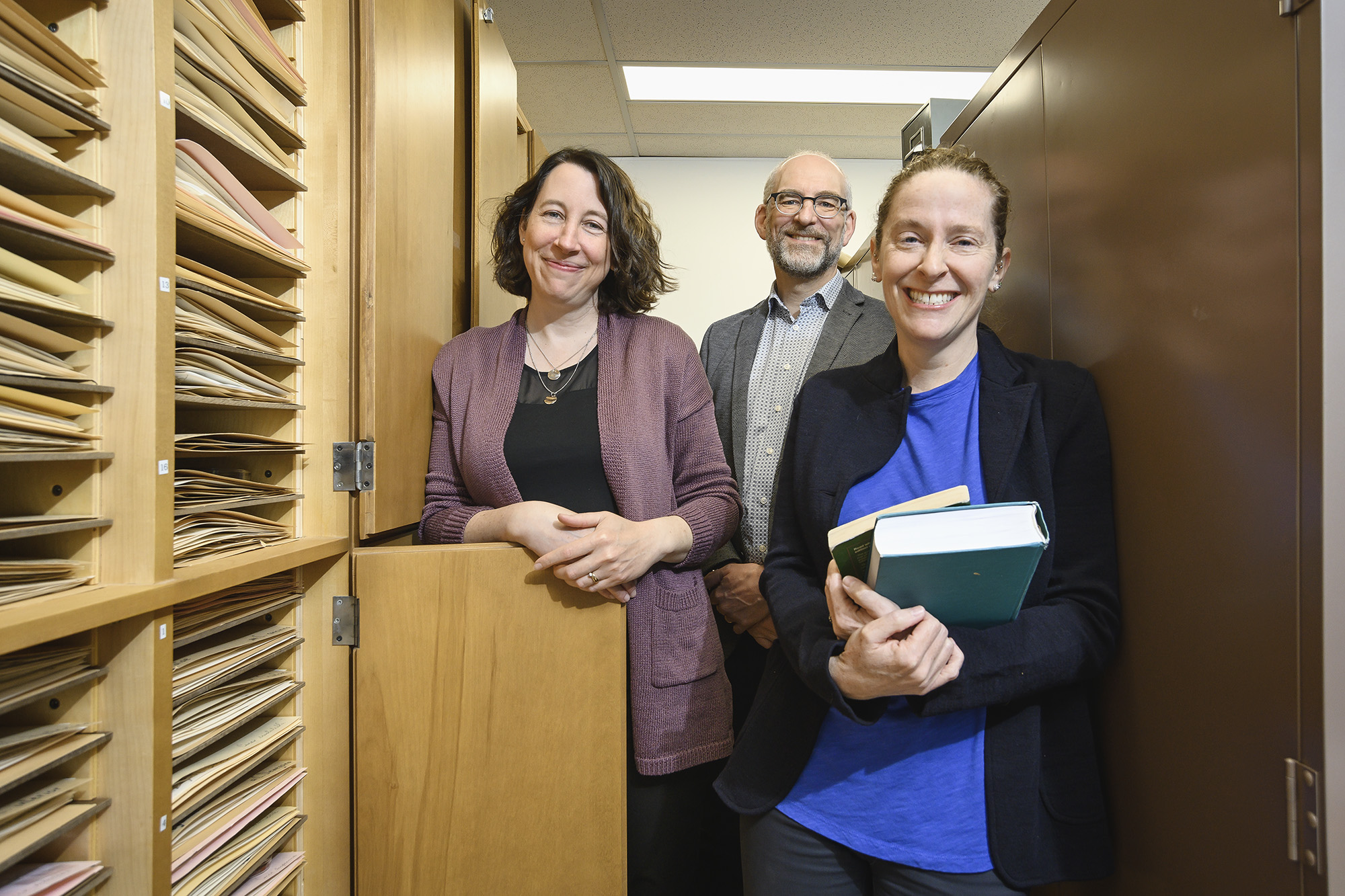
The herbarium exhibit
The students’ collaboration has continued with a second herbarium-inspired project Sawa is organizing: a curated art exhibit of herbarium specimens in the former University Club space for fall 2023.
“I chose around 20 specimens that Ella and Bazil presented to me and then did research for each one to create title cards and designed those,” says Sawa, explaining that high-resolution photographs of the specimens will be taken, mounted, and displayed on the wall as art.
Andrade and Rehman have found it fun to collaborate with Sawa.
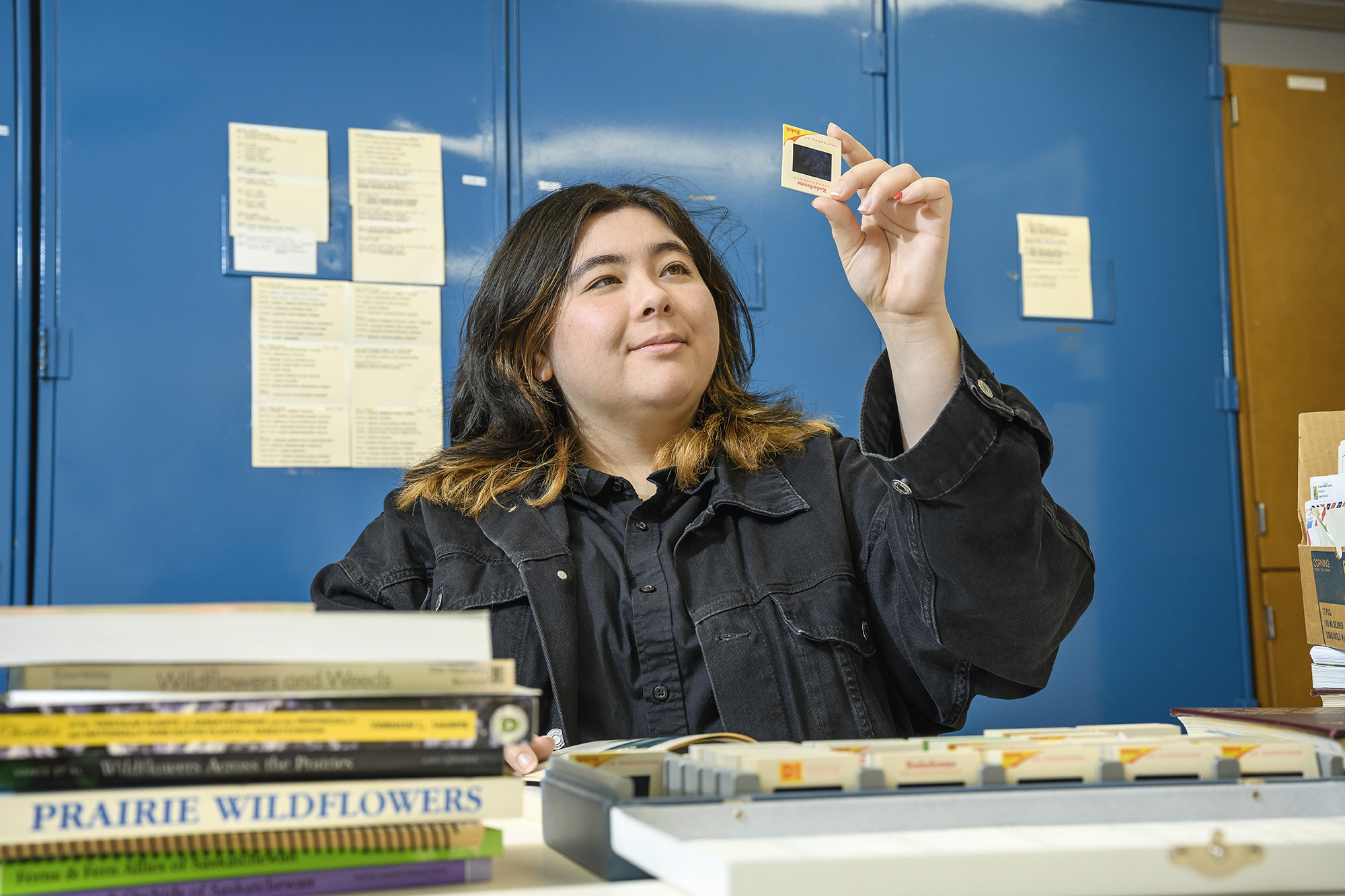
“I like it a lot because we don't really have a lot of opportunities to study the plants since our work is mostly transcribing,” Andrade says. “Learning about the plants and helping Mariko with her exhibition is fulfilling.”
Rehman adds, “Any time she's like, ‘Do you know what this plant is?’, I'll say, ‘No, but I'll find it for you in like 10 seconds, just give me the name and I'll go off on a little adventure.’”
In his quest to raise awareness and protect native prairie in Saskatchewan, Ledingham’s crowning achievement, some may argue, was the formation of Grasslands National Park in the moist, mixed grasslands of southwestern Saskatchewan in 1981.
For the exhibit, the trio has chosen specimens that have kept their colours nicely over the decades, like Lilium philadelphicum, the Western red lily collected by Ledingham in the Great Sand Hills in 1963. Specimens found by Bernard de Vries, who worked closely with Ledingham to help catalogue the herbarium in the ‘90s and whose personal collection is part of the herbarium, will also be part of the exhibit. They include Opuntia polyacantha, a small cactus from Big Muddy Lake in 1968, and Hypoxis hirsuta, a grass called starflower found near Rocanville in 1968.
“The synergy that comes from connecting students in different disciplines is a pretty cool thing to have happening at the undergraduate level,” says Bradley. “That's pretty special.”
Working together
For Charrier, the way in which the herbarium has allowed for cross-disciplinary interactions not only for the students, but also for himself, has been valuable, referencing a recent grant application he and Hart worked on and coordinating with Bradley on internships.
“It's been very meaningful to step into a different world, to realize how much Mel, Crista, and I have in common,” he says. “The disciplinary boundaries that seem so significant in an institutional context are really fairly minimal when it comes to actually working together.”
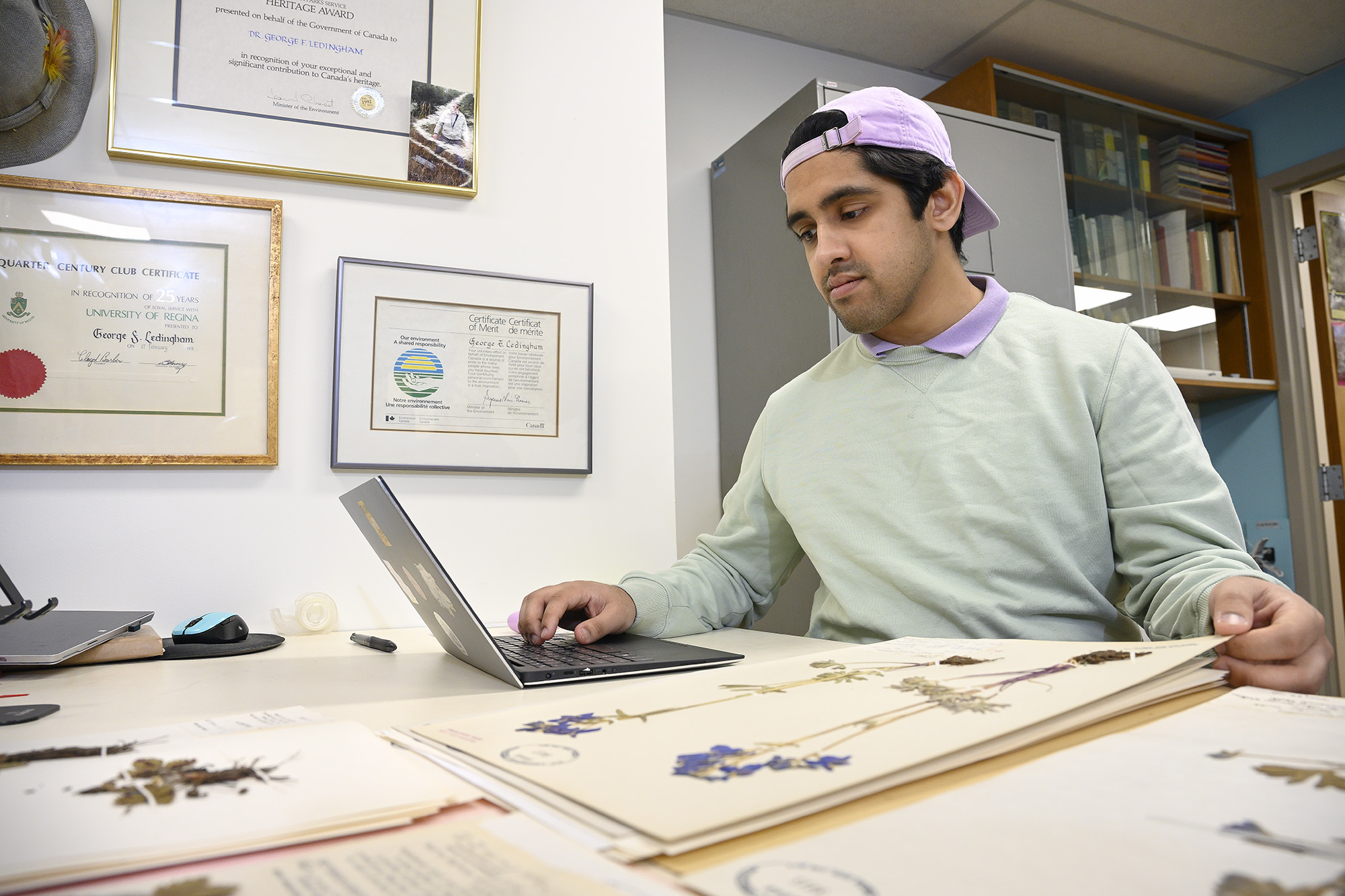
The driving force behind the herbarium, and, it seems, Ledingham’s career in botany, is summed up well in a single question he wrote at the end of an entry on Dec. 11, 1995, when he was taking an inventory of the herbarium’s entire collection: “We badly need research on Canadian vasculars. How can we protect our heritage if we know so little?”
In his quest to raise awareness and protect native prairie in Saskatchewan, Ledingham’s crowning achievement, some may argue, was the formation of Grasslands National Park in the moist, mixed grasslands of southwestern Saskatchewan in 1981. A tribute to Ledingham in The Blue Jay, a journal of Saskatchewan’s Natural History Society which he edited for 16 years, details the 20 years he spent organizing and meeting with federal government.
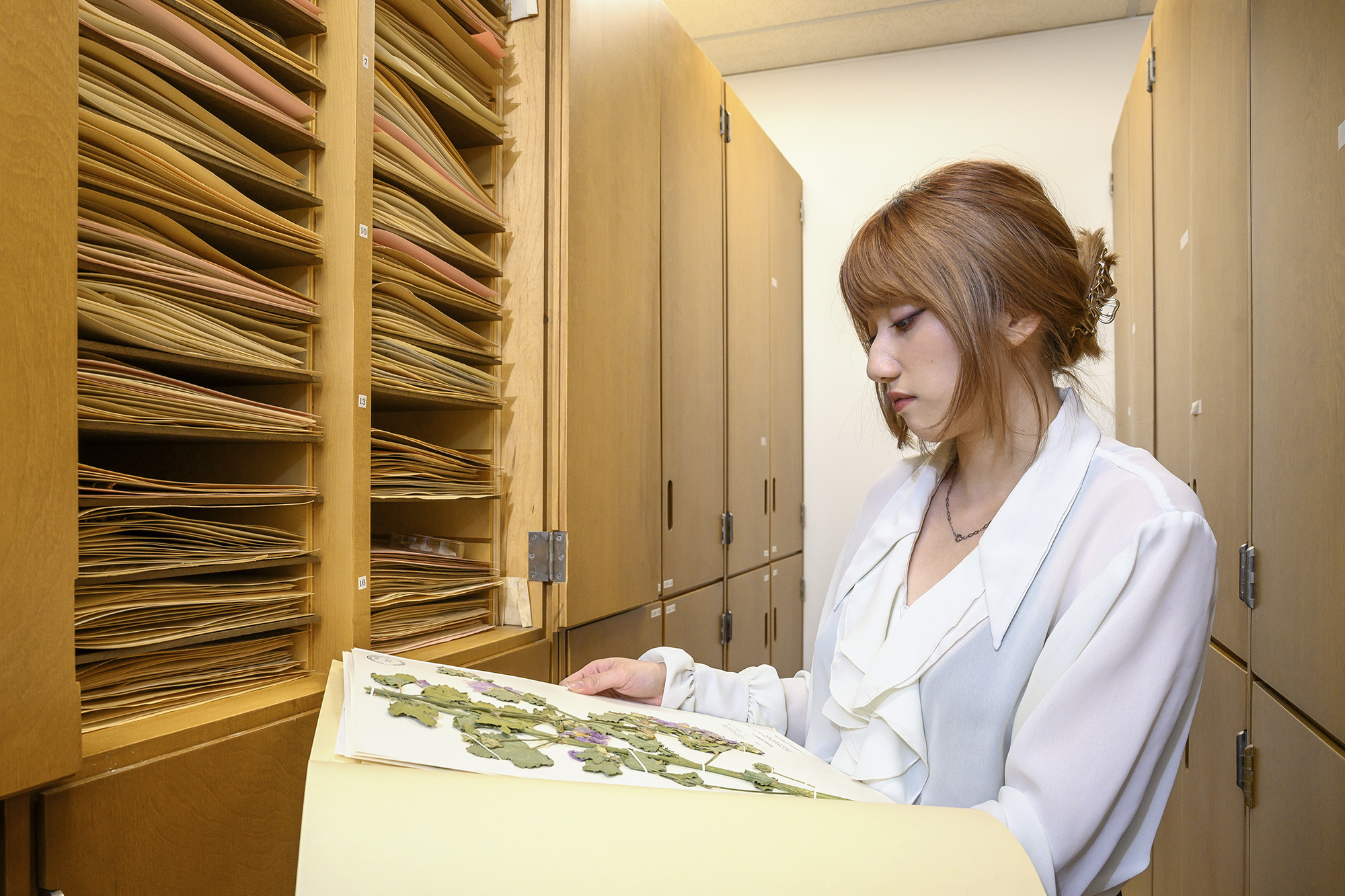
The fact that one could make a career out of studying plants, is something Rehman, Andrade and Sawa have learned to appreciate through their work in the herbarium.
More interested in zoology in the beginning of his studies, Rehman has a new found respect for botany.
“I can really see myself doing plant stuff for the rest of my life and being perfectly happy with it,” he says. “I've started appreciating plants a lot more as a result of this.”
While the dried specimens within the herbarium are indications of past life, the ongoing work to preserve Ledingham’s legacy is creating new resources and opportunities for students and the wider community.
“Once the collection and the associated materials are available in a digital format on GBIF, that really allows accessibility for anyone anywhere to tap in and see what we have to offer,” Hart says.

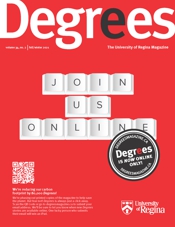

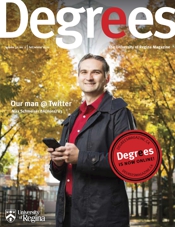


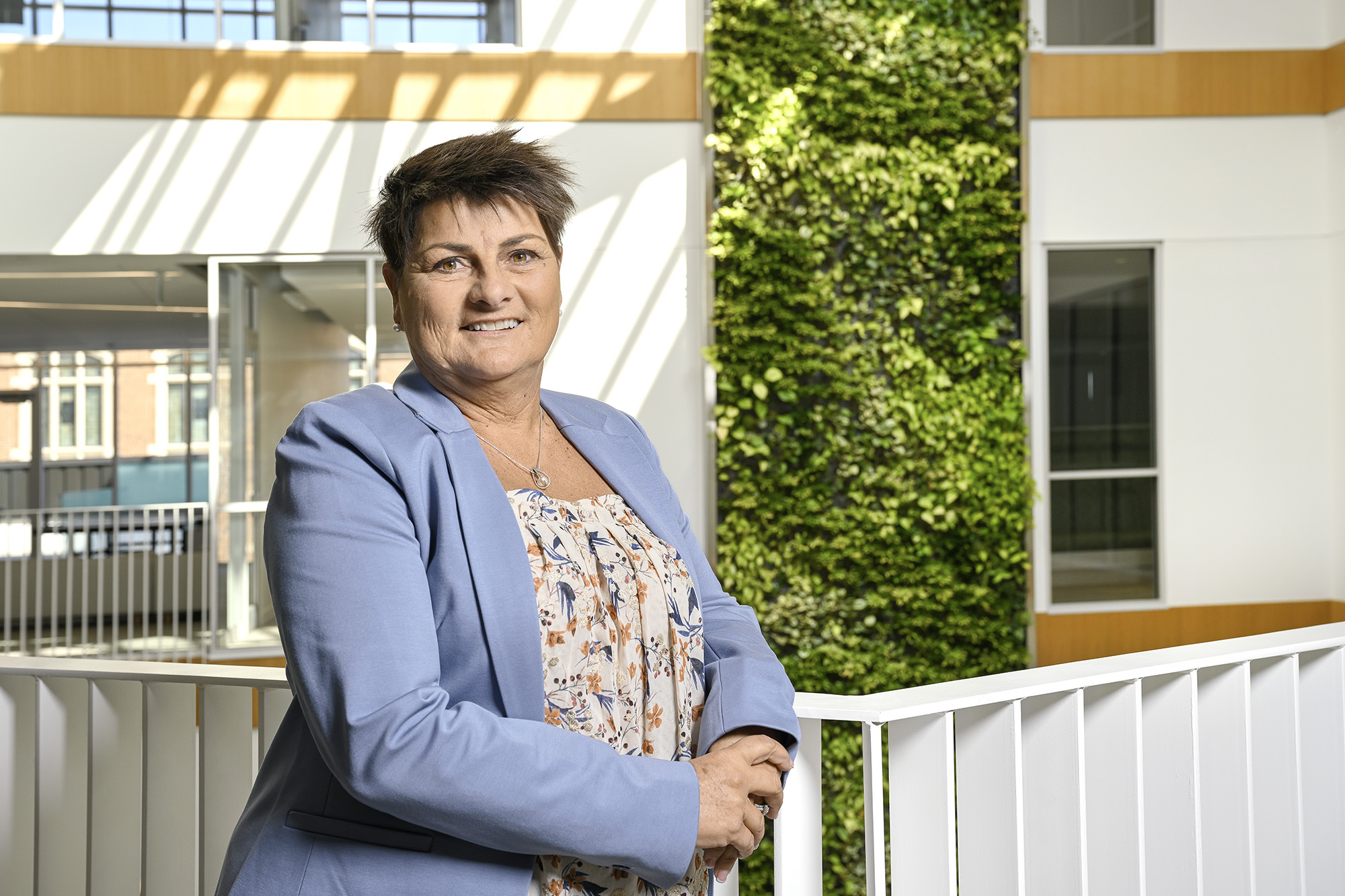 Maggie Sinclair, chief growth officer at Conexus,
says that Cultivator harkens back to credit union roots.
Maggie Sinclair, chief growth officer at Conexus,
says that Cultivator harkens back to credit union roots.
 Jordan McFarlen BEd'10 helps lead Cultivator's operations as the tech incubator manager.
Jordan McFarlen BEd'10 helps lead Cultivator's operations as the tech incubator manager.
 A case in point
"I grew up in Pilot Butte where everyone knows everyone and I really didn't want to leave Saskatchewan," says David Crossman BASc'15, co-founder and CTO of Citrus Technology.
A case in point
"I grew up in Pilot Butte where everyone knows everyone and I really didn't want to leave Saskatchewan," says David Crossman BASc'15, co-founder and CTO of Citrus Technology.
 Hannah Tait BAdmin'22 is launching a tech enterprise called ProdYous. The app connects urban producers of fruits and vegetables with others in their neighbourhood looking to buy fresh food.
Hannah Tait BAdmin'22 is launching a tech enterprise called ProdYous. The app connects urban producers of fruits and vegetables with others in their neighbourhood looking to buy fresh food.